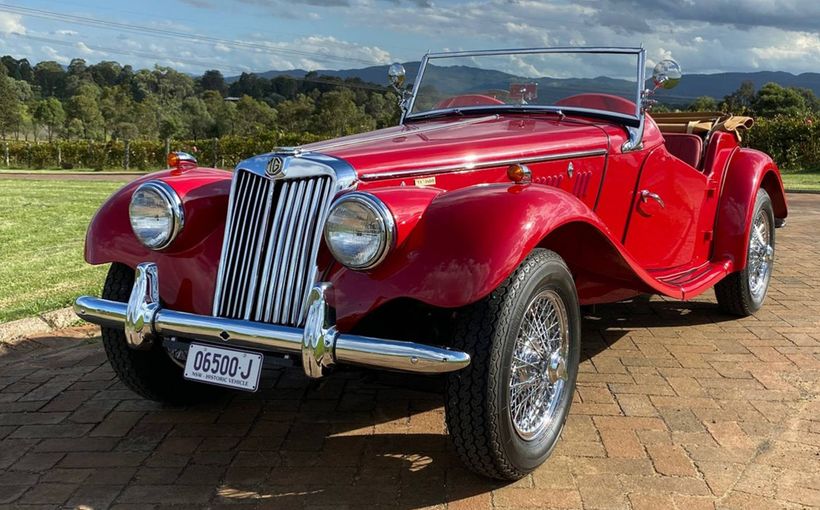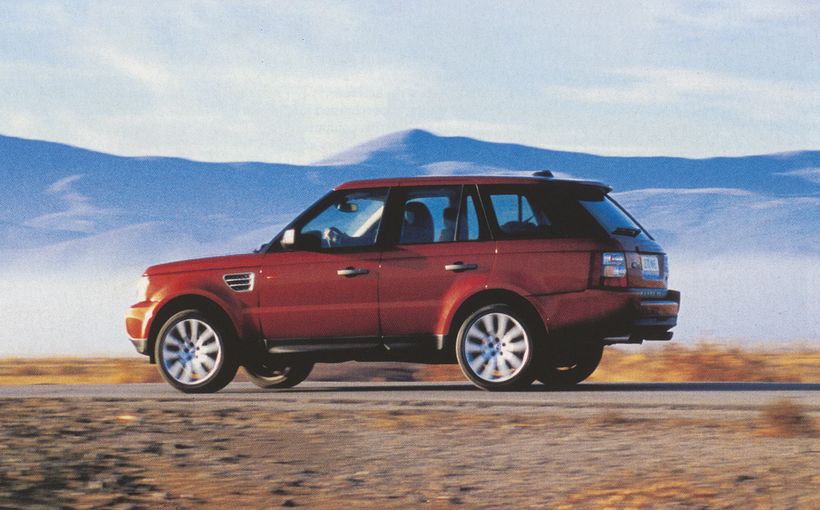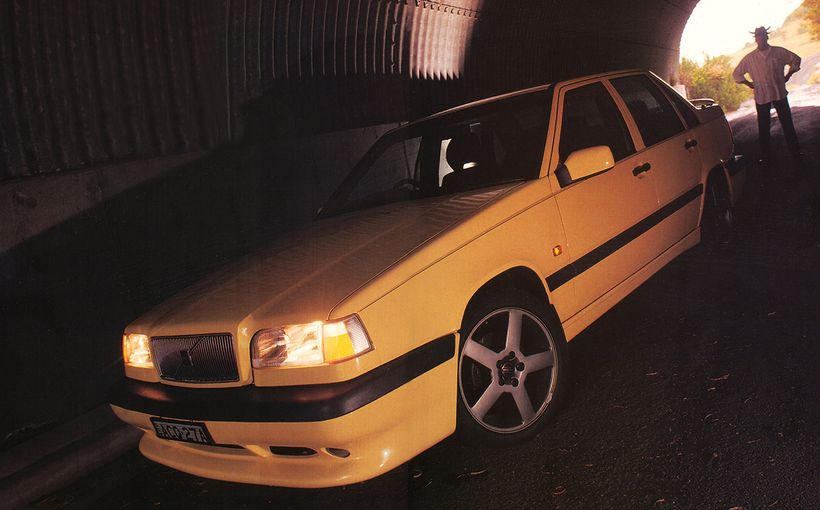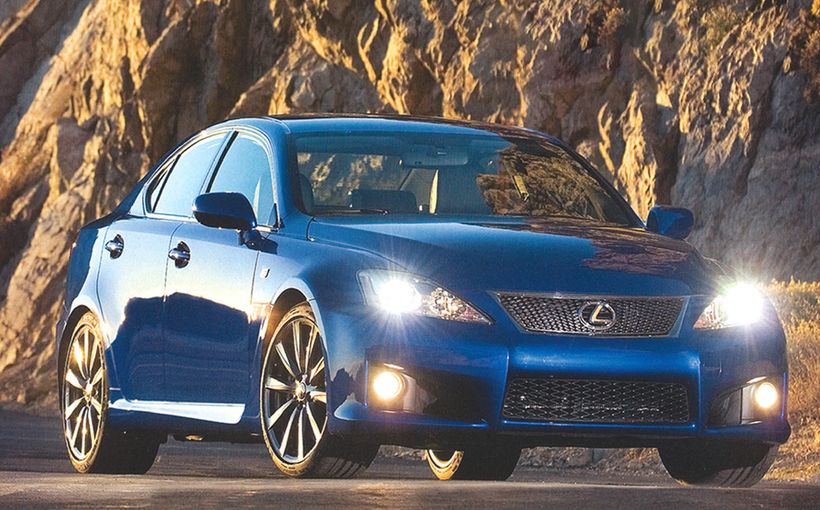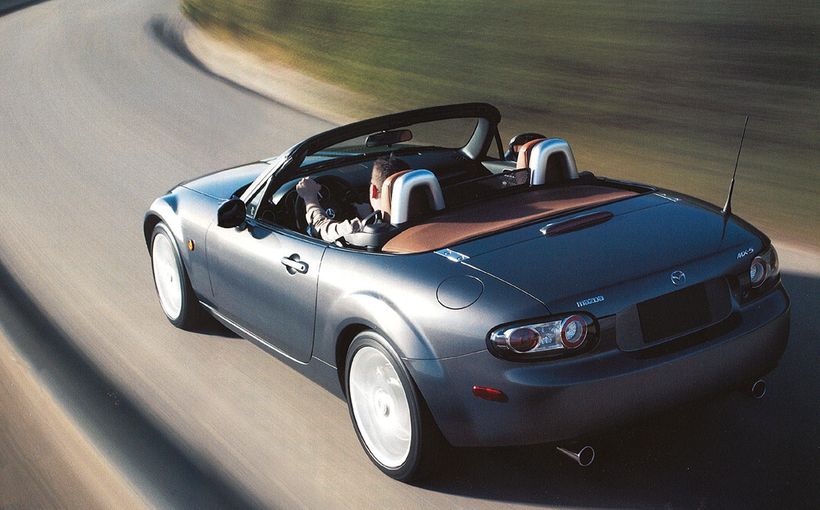
Like most legends, the MGB doesn't match its myth. Never did. Even when it was new in 1962, the B was slow and sloppy. But it looked and sounded like a real sports car, and it was affordable. Ergo, instant icon.
Thirty years after its debut, and 12 years after its demise, the MGB is back - in body, if not soul. At the British International Motor Show in Birmingham, Rover unveiled the MG RV8, a retro remake of the world 's most popular sports car. Virtually all that remains of the MGB is the body shell, remade from original tooling by Rover's Heritage offshoot. The rest has been pumped and primped to create what Rover describes as "the most desirable MG ever". But not forever.
Officially, the RV8 celebrates the 30th anniversary of the MGB. Unofficially, it .is the beginning of MG's rehabilitation as an ongoing and autonomous marque.
Rover is soft-selling the RV8 as a trip down memory lane. However, company insiders confirm that the refined reincarnation of the MGB roadster is a portent of thoroughly modern MGs.
If the myth and mystique of the octagon badge, as toe-tested by the RV8, prove to be as powerful as Rover - and just about everybody else - believes, there will be mainstream MGs in the second half of the decade.
But the days of the everyman MG died with the B in 1980. Part of the MGB's attraction was its accessibility. Back in the '60s and '70s, a young guy or gal could perhaps afford and certainly aspire to a B. The RV8 points MG upmarket, to where the passing of time and fading memories have elevated the brand. It is a luxury sports car, expensive and relatively exclusive, lined with wood and leather and powered by a V8 that can be lazy or lusty.
According to Rover Special Products director Steve Schlemmer, low cost new generation MGs "would be very, very difficult to make work because they require high volume and big investment".
It is significant that MG's future is in the hands of RSP, which specialises in carefully defined markets, small numbers, low development costs and sure profits.
In researching the market for a reborn MGB, Schlemmer encountered a recurring reaction among target customers. ''They spoke fondly of owning or desiring an MG in their youth ," he says. Despite further research, which confirmed the existence of an international expectation of an MG revival - "People feel the MG marque is just in suspension" – Schlemmer is non-committal.
"We are serious about MG if we can find ways to make MG products people want and which can make money for the company. If we can satisfy both requirements, we'll go ahead and do it. The desire is certainly there."
So does Rover have firm plans beyond RV8? "Nothing I'm allowed to talk about. What RV8 says about MG in the future is that we're serious about it and if we can find a project that works, we'll do it."
After the MGB was killed, the revered octagon became an image appendage for sporty Metros, Maestros and Montegos. That stopped in 1990, but surprisingly, Schlemmer doesn't rule out a return of MG-badged sedans. "There's no reason why we shouldn't do authentic MG saloons again ," he says, referring to closed classics like the MG Magnette.
The idea of using the B body to revive the MG marque was inspired by British Motor Heritage bosses Peter Mitchell and David Bishop. They wanted to make a 'traditional' MGB V8 roadster, but Rover management decided production of a complete, new car was beyond Heritage's resources and mandate.
However, the concept was picked up by Rover Special Products, a group set up in 1990 to investigate and instigate niche models. Research in early '91 established that a market existed for a modern, B-based MG V8.
"It was a proposition the customer could understand," Schlemmer says.
The research found interest in an upmarket model which reflected an imaginary evolution of the MGB. Schlemmer thinks the 30th anniversary of the MGB adds to RVS's "retrospective cachet".
He says the typical RV8 buyer will be a "fairly well-off" middle-aged family man. "He probably drives an expensive executive saloon and is attracted to the idea of owning a classic car, but he's not a DIY type and is worried about reliability. What he wants is a no-hassle classic."

Production of the RV8, beginning early next year, is limited to 15 a week. Rover has planned on potential total sales of 1500-2000 in the UK, which is likely to remain its only market.
Despite strong interest in the United States, Schlemmer rates transatlantic sales as "extremely unlikely" because re-engineering costs appear prohibitive.
He admits the underlying aim of the project has been to minimise costs and maximise profits. 'We're not doing this for nostalgic or emotional reasons."
Rover intends to review obvious right-hand drive markets like Australia and Japan on an individual basis, but exports seem destined for the too hard-basket.
Initial indications are that UK demand will be sufficient to sustain RV8, anyway. In the lead-up to its launch, Rover received what it regards as 1 000 "serious enquiries" and 80 firm orders accompanied by a $7000 (£2500) deposit. The first 250 orders are price-protected at $64,600 (£26,500), with deliveries due to start next April/May.
The RV8 is hand-built. MGB body shells, produced from the original dies and jigs, are sent from BMH at Faringdon, Oxfordshire, to Rover's factory at nearby Cowley, where RV8s are assembled and trimmed in the traditional - that is, old-fashioned - manner.
Despite the heavy retro element, the original MGB design has been extensively developed and refined. According to Schlemmer, 75 per cent of RV8 components - measured by number – are new. Of the remainder, 20 per cent are retooled, resourced or redesigned MGB parts and only five per cent are produced from original tooling (although that includes the body shell).
The restyle is clearly evolutionary, although its heavy, bulging lines are more redolent of the infamous rubber-bumper Bs of the late 70s than the simplicity and balance of the unadulterated original.
Rover tried for a low, wide stance by increasing track and flaring wheelarches, but the RV8 still stands taller than its '60s sibling and has a pronounced tail hike.

The main exterior changes are new flared front and rear wings, fully integrated, body-colour front and rear bumpers, bumper mounted circular front indicators and driving lamps, larger headlights, new narrow mouth grille, bonnet power bulge and single piece windscreen frame. Other stylistic revisions are new tail light assemblies, deletion of the side window quarter vents, body-coloured, cheater mounted door mirrors and moulded body-colour sills.
Traditional detail cues which have been retained are the doorhandles and fuel filler cap. The famous MG octagon badge has been redesigned for a '30s look in traditional brown and cream livery.
Although based on the original frame, the hood has been redesigned by Tickford for simpler operation. The new tight fitting top also provides proper protection against water leaks and wind draughts.
Also shielded from the elements are the electrics, literally the B's bete noire. In addition to the latest fuses, connectors and relays, the electrical system has an all-new internal wiring harness- unlike the original exposed item, slung on the underside of the MGB!

Inside, the RV8 is awash with burr elm wood and hand-worked hide. The sumptuous look is in stark contrast to the MGB's sparse, basic black interior.
The carry-over instrument panel · contains new, more legible dials and the B's cluttered control layout and switchgear have been modernised and simplified.
The fascia, centre console and door cappings are finished in burr elm veneer, while leather has been lavished on the new, more supportive seats and head restraints, arm rests, gear lever gaiter and chunky three-spoke steering wheel. The rest of the surfaces are covered in soft leather-look vinyl.
Next to the electrics, the RV8's biggest advance over the MGB is under the bulging bonnet. In place of the sluggish, antiquated 1.8 litre B-series four-banger is the sports version of the 3.9 litre Land Rover V8. The powertrain, in. fact, is the same "sports car package" supplied to Morgan and TVR. The Buick-derived alloy motor drives through LA's LT77 five-speed transmission (the MGB had a clunky four-slot gearbox).
The single overhead cam, two valves per cylinder V8 produces 143 kW at 4750 rpm and 318 Nm at 3200 revs. That's enough grunt to launch the 1280 kg RV8 from 0-60 miles per hour (96.6 km/h) in 5.9 seconds. Claimed top speed is 217.3 km/h (135 mph).
By comparison, the MGB was leisurely, lumbering to 60 mph in 11.5 seconds and running out of steam at 1 05 mph.
The RV8 and MGB share a stirring exhaust note. Despite its anaemic engine, the B emitted a raspy burble which sounded sporty beyond the car's station. The RV8's twin pipe exhaust produces a resonant and exciting boom.
Surprisingly, Rover plays down the RV8's thundering performance. "Performance is not really part of the package in this car," Schlemmer says, straight-faced. "It doesn't need to be the fastest or the most modern."

There's certainly nothing gee-whiz about the suspension, which retains the basics of the MGB's leaf-sprung rear end.
But it's not quite as archaic as it sounds.
The back springs are now progressive rate, low friction, twin taper-leaf units, which Rover claims provide "improved ride and handling quality".
The old lever arm shock absorbers are replaced by telescopic Konis. According to Rover, a torque sensing differential "controls the performance potential", aided by the addition of twin lower torque control arms for improved axle location.
The front suspension has been substantially upgraded, utilising a double wishbone layout with coil springs and concentric Koni dampers (again in place of the 'classic' lever arm shockers). Along with the steering rack, the suspension assembly is mounted on a modified MGB front cross member.
All-new are the front swivel hub and stub axle assemblies, with conventional sealed-for-life ball joints for the upper mountings. The lower mountings incorporate a road car first: Formula One-developed Goldline spherical bearings.
Anti-roll bars are fitted front and rear.
The front suspension and steering geometry are carried over from the MGB, with "subtle improvements" to match the meaty 205/65x15 tyres mounted on six inch wide, lattice spoke alloy wheels.

"The overall objective for the chassis package," according to Rover, "has been to provide safe and predictable handling with an improvement in ride quality over the original MGB."
Adds Schlemmer: "Nice, traditional British ride and handling."
There is nothing traditional, however, about the RV8's corrosion resistance and paint quality.
Modern sealers, adhesives and zinc-coated steel ensure it meets exactly the same protection standards as all current Rovers, carrying the same six-year anticorrosion warranty.
Bodies are prepared in the Rover 800 paint facility at Cowley, using clear over base technology. Included in the RV8 colour palette are the inevitable variations of British Racing Green.
Trappings of tradition are the MG RV8's raison d'etre. Without them, it would be no more than a flawed and compromised 'pukka package', as relevant and useful as a cheese cutter cap and stringback gloves. The RV8's hide-bound adherence to history emphasises just how much MG's future relies on its past.
THE B HIVE
A piece of paper started the chain of events leading to the MGB's reincarnation as the RV8. The fateful notice was shown to self-confessed "lifelong Triumph TR enthusiast" David Bishop in late 1986.
Six years later, Bishop runs a booming business which has saved thousands of MGBs, MG Midgets, Austin-Healey Sprites I and Triumph TR6s from the scrap heap.
He is executive director of British Motor Heritage, and his chance discovery transformed BMH from an obscure procurer of parts for British bangers into a remanufacturer of classic sports car body shells.
Using rescued original tooling, BMH builds virtually complete new bodies which enable owners of MGB roadsters and GTs, Spridgets and TR6s to rebuild their rusting, sagging sporties to better-than-new condition. And all because Bishop happened upon the sheet of paper authorising the scrapping of tooling for the Triumph TR7.
He saw the death notice too late to save the presses and jigs which produced the doorstop-shaped TR7, but the discovery put him on the trail of the tooling for other British Leyland legends.
"That started in Christmas '86 and I got all the relevant information and found the tool numbers I wanted," Bishop remembers. "I went searching all these acres of tool yards and found enough to think we could do the MGB body shells. Most of it was there."

His search also uncovered discarded tooling for a myriad of major and minor parts for the Spridget, TR6, Austin Allegro, Morris Marina/ltal and Austin Ambassador/Princess. Despite being left out in the open for several years, the presses and jigs were all serviceable.
"You're talking fairly hefty chunks of steel. They're built like battleships. It's very, very strong engineering material."
The rescued MG and TR6 tooling- the heaviest about 14 tons - is spread among BMH's factory at Faringdon, Oxfordshire, and contractors who use them to press parts and panels on behalf of Heritage. At the Faringdon facility, which has progressed from assembly operations to in-house pressing since it was opened on April Fool's Day, 1987, there are around 2000 of the smaller tooling pieces.
The machinery is tended and operated by 25 ex-Rover Group artisans. The factory is a curious mix of traditional craftsmanship and new technology; the bodies are hand-built using electric welding equipment.
The MGB body shell consists of 240 panels requiring 3000 spot welds. It is made to the exact original specification, but is, in fact, better. The quality of the steel is more consistent and preparation and paint methods are vastly improved.
Unlike rust-prone original Bs, the BMH bodies are electrophoretically primed to the same standards as moderns. And as a spin-off from the RV8, which has to meet Rover anti-corrosion criteria, the bodies are now zinc coated.
The upshot is that a rebodied MGB (or Spridget or TR6) will last longer than an original car- and for a lot less than major metal surgery.
Based on personal experience, Bishop estimates a 'new' B can be built from scratch for between $14,000 and $20,000, utilising a donor car with salvageable trim and reconditioned mechanicals.

Of the more than half million MGBs made between 1962 and 1980, it's estimated around 200,000 have survived. However, so many of them are in such poor condition that there is an on-going market for body shells or panels.
Since the first remanufactured B body was built in early '88, BMH has made nearly 2500 - 10 times the original estimate. Between the B, Spridget and TR6, Bishops expects a steady combined demand of 750 bodies a year.
BMH has set up a separate 'production line' at Faringdon to build body shells for RV8, which uses the B's monocoque unaltered. In fact, the RV8 was inspired by Bishop's dream to make a complete V8- engined MGB roadster - a combination never produced by the factory.
"The original idea came out of here. But ours wouldn't have been the car it's going to be. Rover accepted that there is a market there and refined the idea.
'We built the first two prototypes of the RV8, but in fairness, it's gone a long way from there. A lot of the engineering that's gone into, we couldn't have done."
British Motor Heritage is a wholly-owned subsidiary of the Rover Group. It was set up in 1982 to service the demand for replacement parts for out-of-production models from the former British Leyland empire. As well as the glamour marques, BMH sources and supplies thousands of original equipment and remanufactured components for all sorts of BL oldies.
The parts, which range from pre-war items to recently discontinued lines, are distributed by an international network of 55 licenced Heritage Specialists, including Australian distributor MG Sales & Service in Adelaide.
BMH exists to fund the British Motor Industry Heritage Trust, a registered charity. Although legally separate, they share the same management team, headed by managing director Peter Mitchell and Bishop.

The Heritage Trust was established in 1978 to preserve the history of the British Leyland Motor Corporation, formed from the merger of BMC and Leyland. The Trust has archives of about five million technical and design study drawings, and more than a million photographs, and a collection of more than 300 cars.
Of BMH's profits, 75 per cent are covenanted to the Trust to maintain its museum, restoration workshop and archives. "We make over £200,000 for the Trust each year," Bishop says.
Despite its mandate to operate as the historical profit centre, Bishop is adamant money is not BMH's main motivation.
"We're run as a commercial operation, but I think, without exception, we're all enthusiasts. So although I say our primary objective is commercially driven, we like to see the cars, we like to use the cars. We do everything we can to keep those cars on the road."
Go Back in time with the Wheel Archive. Get FREE access to 5 years of Wheels archive content now!  Protect your Classic. Call Shannons Insurance on 13 46 46 to get a quote today.
Protect your Classic. Call Shannons Insurance on 13 46 46 to get a quote today.



